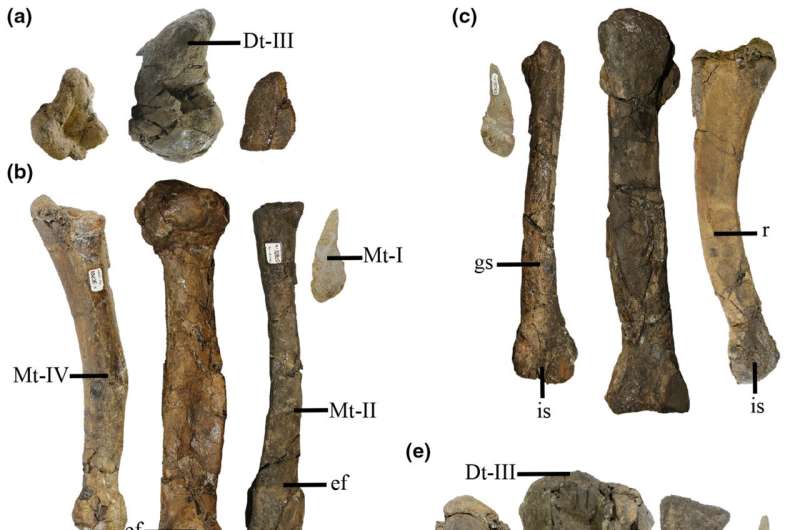May 24, 2024 report
This article has been reviewed according to Science X's editorial process and policies. Editors have highlighted the following attributes while ensuring the content's credibility:
fact-checked
trusted source
proofread
Abelisauroid, a dinosaur with very tiny arms, identified in Argentina

A team of paleontologists from Museo Argentino de Ciencias Naturales Bernardino Rivadavia, Consejo Nacional de Investigaciones Científicas y Técnicas and The Chinese University of Hong Kong, has identified a new species of abelisauroid dinosaur. They have named it Koleken inakayali.
The work is published in the journal Cladistics.
The fossilized remains were found in the La Colonia Formation, a geological formation located in what is now modern Argentina. The dig site there is being excavated as part of a project funded by the National Geographic Society called, "The Age of Dinosaurs." The remains of the K. inakayali have been dated to approximately 70 million years ago.
In studying the remains, the team was able to identify multiple skull bones, most of the creature's back, all of one hip, some of its tail bones and almost all the bones from both of its legs. They noted that the dinosaur had multiple traits that set it apart from Carnotaurus sastrei, particularly in its skull bones.
They also note that the ancient dinosaur was bipedal with extremely tiny arms. The research team found that it was a species of Furileusauria, which was a group of abelisauroid dinosaurs. Also, in comparing the remains with several other types of abelisauroid and noasaurids, they found evidence of rapid evolutionary changes during some spans of time, and little to none in others.
Abelisauroid dinosaurs were a family of theropod (hollow boned) dinosaurs that lived during the Cretaceous on the Gondwana continent—their fossilized remains have been found in many parts of South America, Africa, India and Madagascar. They are also believed to have been the most abundant type of theropod. The discovery of K. inakayali, the team suggests, indicates that abelisaurids were more diverse than prior research has suggested.
The team concludes by suggesting that the discovery of K. inakayali helps us to better understand the history of abelisaurids and underscores the importance of continuing to explore the history of dinosaurs in general. Doing so, they note, helps to explain the history of life on Earth, and possibly, offers insights into how humans might remain a viable species as the planet changes.
More information: Diego Pol et al, A new abelisaurid dinosaur from the end Cretaceous of Patagonia and evolutionary rates among the Ceratosauria, Cladistics (2024). DOI: 10.1111/cla.12583
© 2024 Science X Network





















